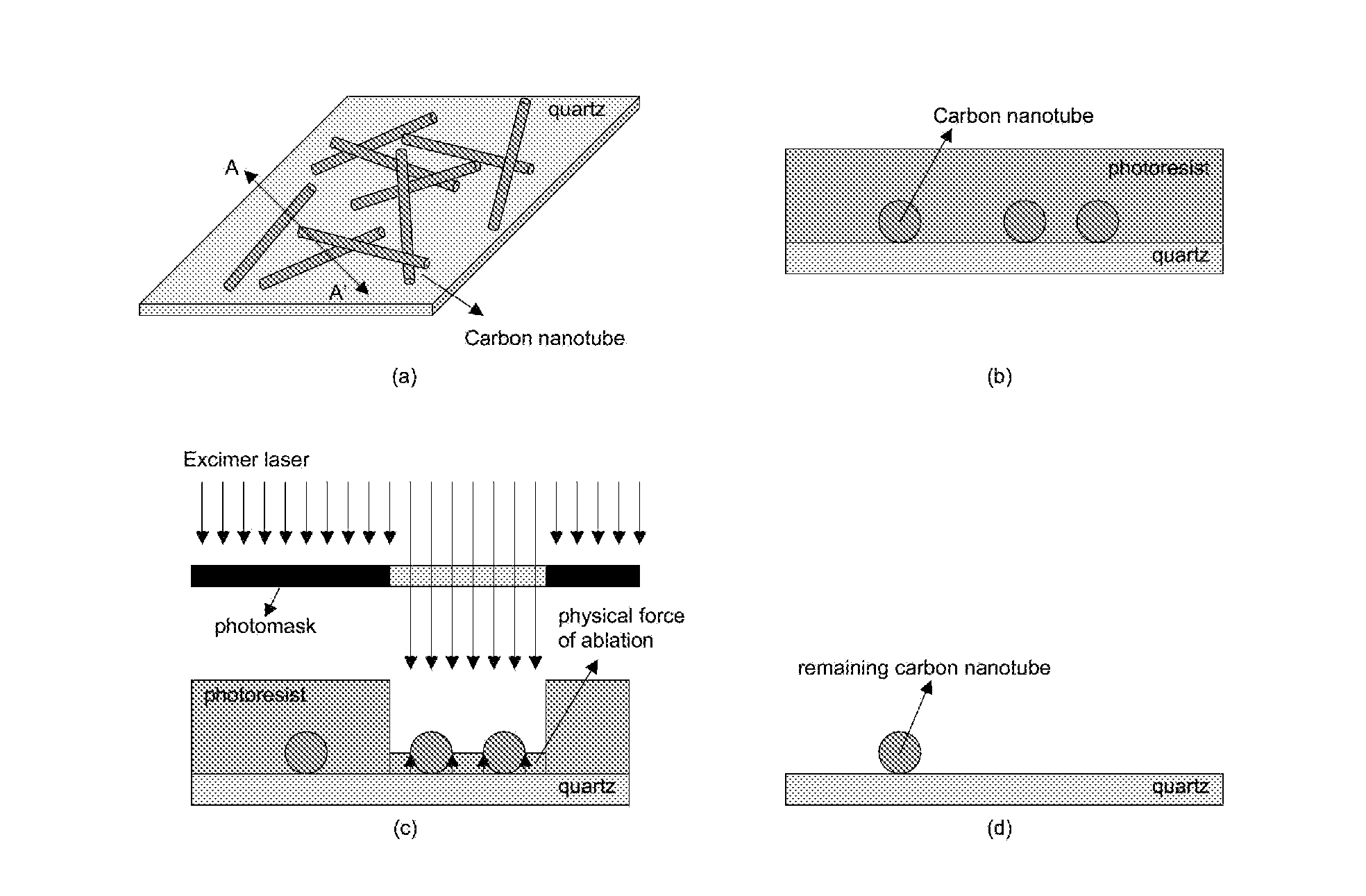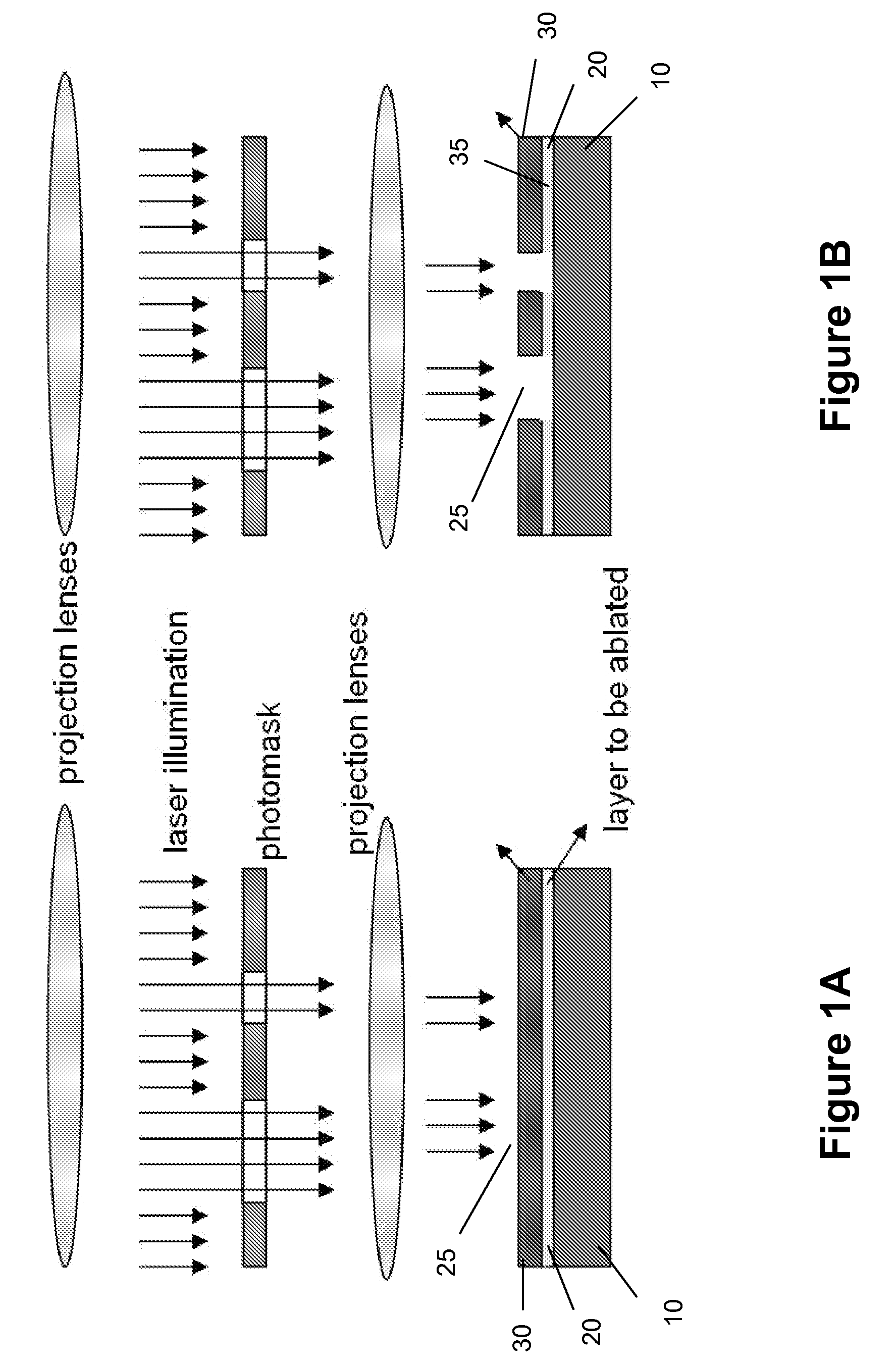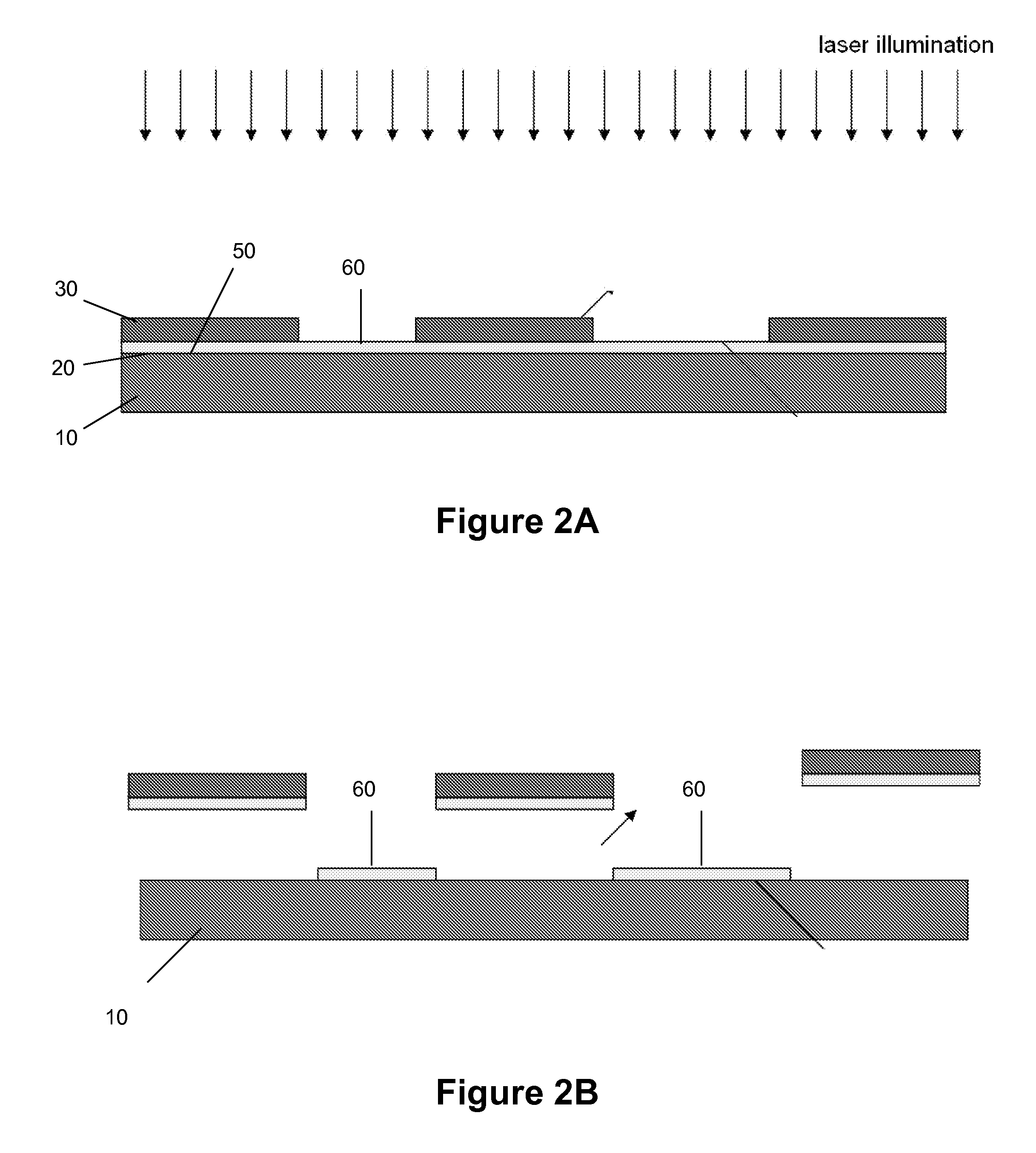Material assisted laser ablation
a laser ablation and laser technology, applied in the field of material assisted laser ablation, can solve the problems of affecting the commercial implementation of nanotube-based electronic systems, and the physical and electronic characteristics of carbon nanotubes deposited by electrophoresis may not be sufficient to support applications in high-performance electronics, etc., to facilitate their integration, low fluence conditions, easy to remove through developing
- Summary
- Abstract
- Description
- Claims
- Application Information
AI Technical Summary
Benefits of technology
Problems solved by technology
Method used
Image
Examples
example 1
Patterning of Single Walled Carbon Nanotubes Using a Low-Fluence Excimer Laser Photoablation Process
[0061]Abstract
[0062]Carbon nanotube films were patterned by an excimer laser projection photoablation process at low incident energy conditions. The carbon nanotubes were deposited on a quartz substrate, and then a conventional photoresist was coated on it as a photoablation assisting material. The photoresist and the carbon nanotubes were patterned simultaneously by the projection photoablation process, and then the photoresist was removed. Due to the physical force of the ablation process, the carbon nanotubes were patterned cleanly even though the incident fluence on the carbon nanotubes was significantly lower than the threshold energy otherwise needed for their direct ablation.
[0063]Experimental Results
[0064]Carbon nanotubes have been researched as a possible important new component in various devices because they have a promising potential in applications such as microelectronic...
example 2
Patterning of Porous Materials
[0088]Porous materials are important components used in sensors and biomedical applications. The present invention provides processing capable of patterning porous target materials, including porous materials that are difficult to pattern via direct laser ablation methods. In some embodiments, an AMM layer is provided in contact with the porous target material in a manner such that the PAM is provided under the porous material or within the pores of the porous material. Upon exposure to electromagnetic radiation having sufficient wavelengths and fluences to initiate ablation of the AMM, forces generated during ablation result in removal of porous material integrated with the PAM.
example 3
Removal of Photoablation Debris and / or Byproducts After or During Photoablation
[0089]The present invention includes processing wherein photoablation debris generated by photoablation of the photoablation assisting material and target material is removed via one or more processing steps. This aspect of the present invention is particularly useful for patterning in nano- and micro-electronics applications wherein such photoablation debris can degrade performance.
[0090]After photoablation of photoablation assisting materials, such as polymers and / or photoresist, thin layer (monolayer or some layers of hydrocarbon byproducts) of photoablation debris (e.g., residue and / or byproducts) can remain on the ablated area. For example, some debris remains after ablation of photoresist as shown in FIG. 7(a) and 7(b). FIGS. 7a and 7b provide optical microscopic photographs of patterned photoresist. The incident excimer laser fluence was 50 mJ cm−2 and the number of pulses was 40. FIG. 7a shows pat...
PUM
| Property | Measurement | Unit |
|---|---|---|
| thickness | aaaaa | aaaaa |
| viscosity | aaaaa | aaaaa |
| thickness | aaaaa | aaaaa |
Abstract
Description
Claims
Application Information
 Login to View More
Login to View More - R&D
- Intellectual Property
- Life Sciences
- Materials
- Tech Scout
- Unparalleled Data Quality
- Higher Quality Content
- 60% Fewer Hallucinations
Browse by: Latest US Patents, China's latest patents, Technical Efficacy Thesaurus, Application Domain, Technology Topic, Popular Technical Reports.
© 2025 PatSnap. All rights reserved.Legal|Privacy policy|Modern Slavery Act Transparency Statement|Sitemap|About US| Contact US: help@patsnap.com



